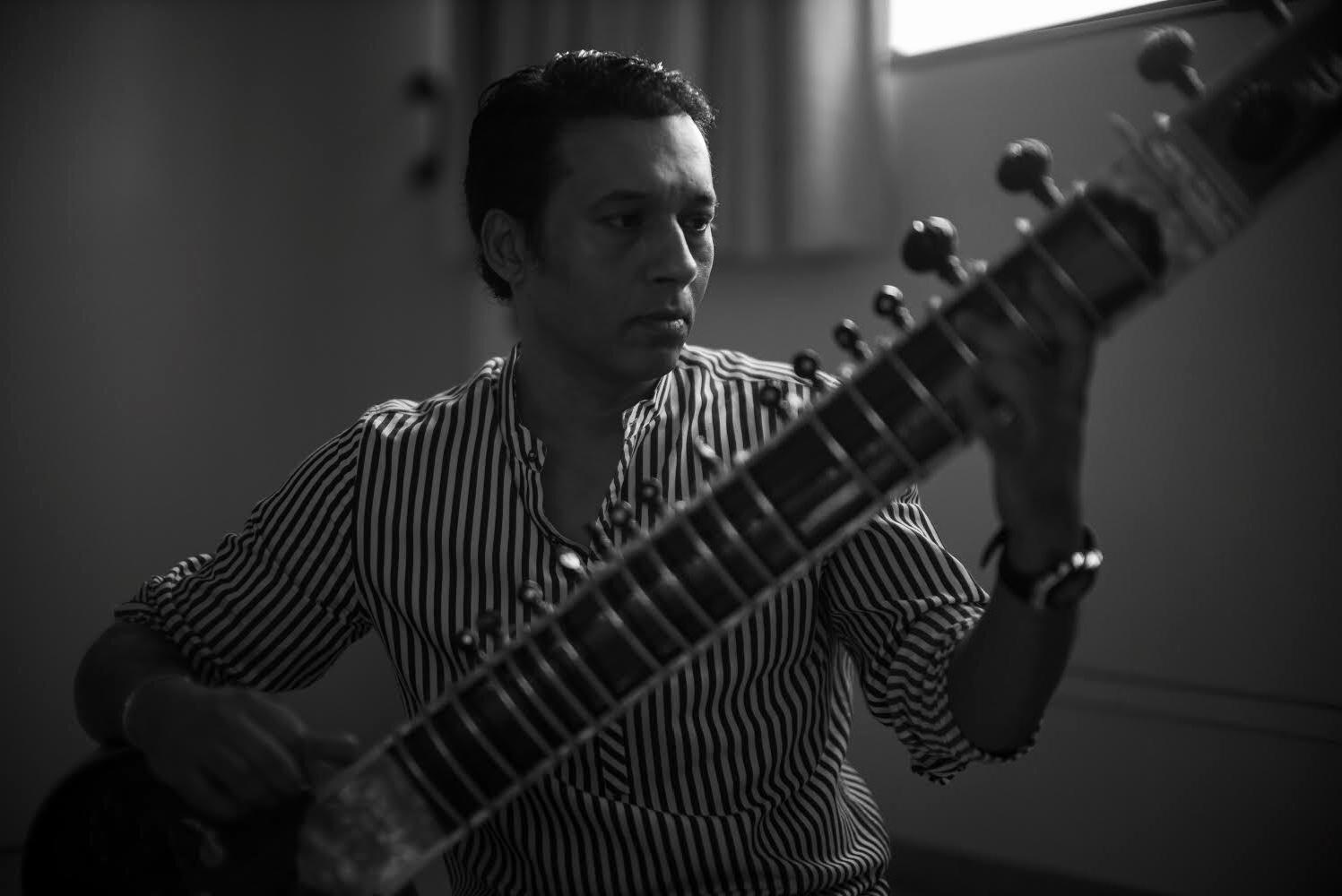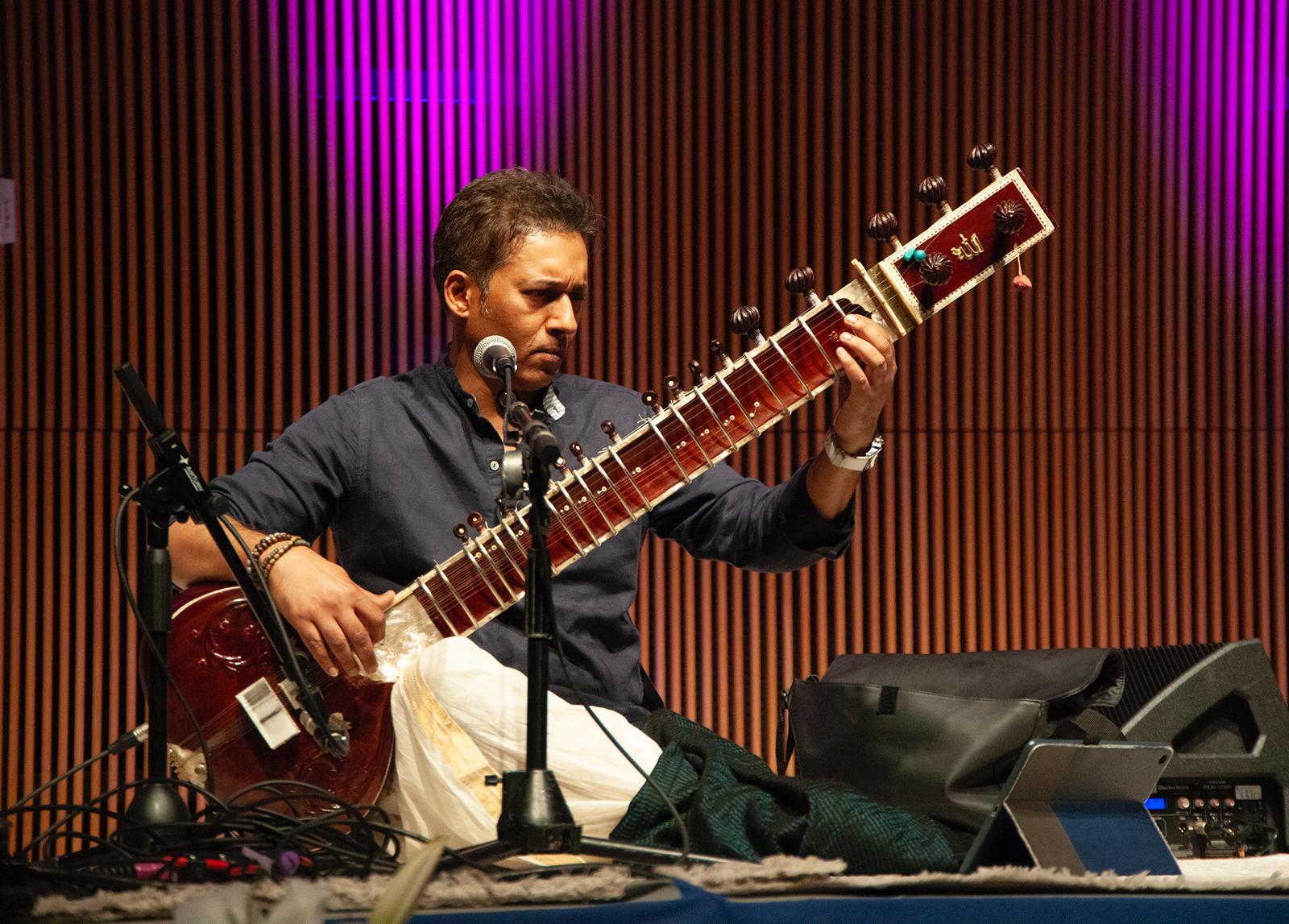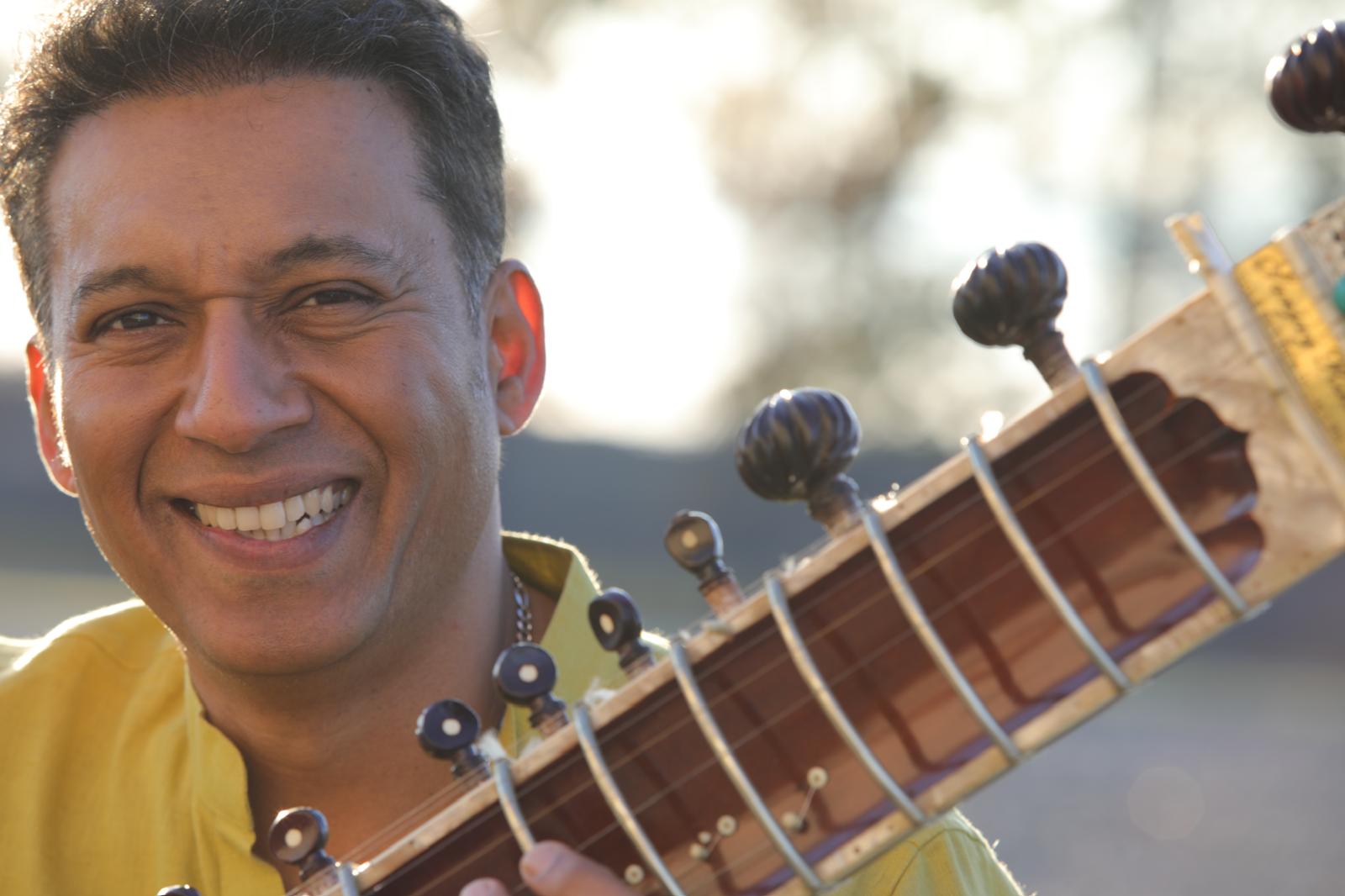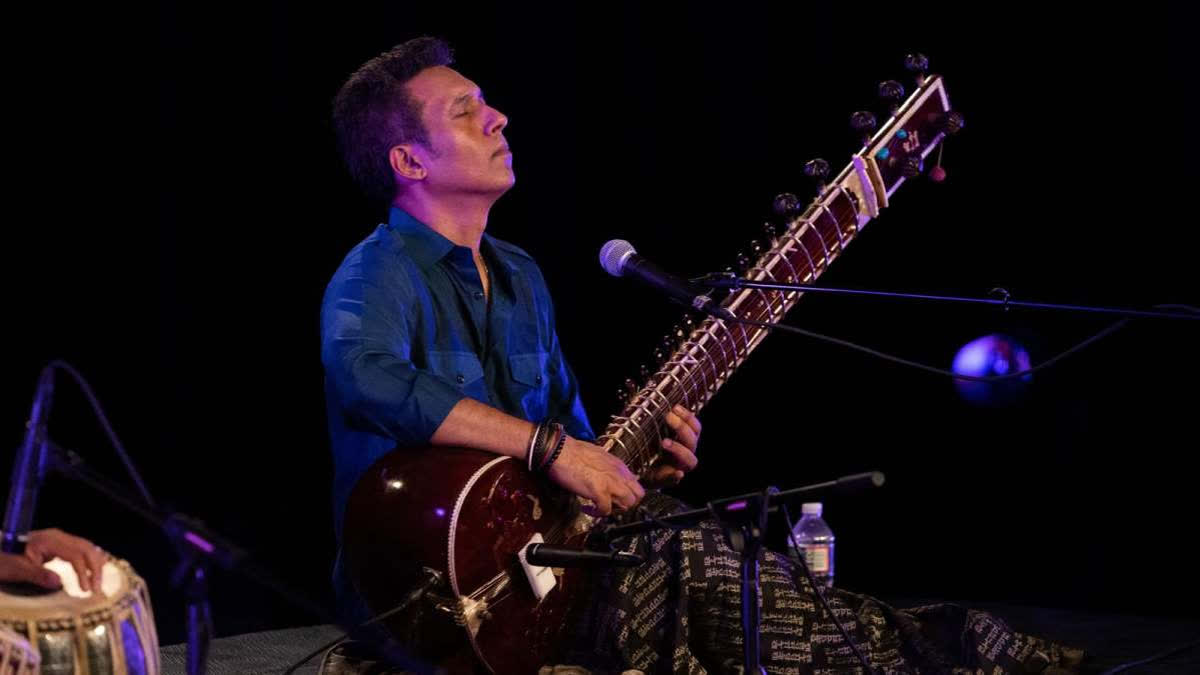Renowned sitarist Hidayat Husain Khan, son of classical music giant Ustad Vilayat Khan, is "excited for what 2025 has in store." Less than a month into the year, the scion of one of the most illustrious lineages in Hindustani classical music, has already released "Jai Hind," a reimagined rendition of the national anthem also featuring percussionist Avirodh Sharma.
An invitation to perform the National Anthem at an event in New York inspired Khan to revisit "Jana Gana Mana" in a way that has not been explored yet. While preparing for "Jai Hind," Khan, who has made the United States his second home, noticed that numerous recent interpretations leaned heavily on fusion and Western influences, whereas he wanted to approach it differently. In an email interview with ETV Bharat's Minal Rudra, Khan shared that he aimed to create a version that is deeply rooted in Indian tradition and also reflects his learning of Indian classical music.

Excerpts from the interview:
ETV Bharat: Were there any particular challenges while reinterpreting such a revered composition in your own style?
Hidayat Khan: There were definitely challenges in reinterpreting such a revered composition. The National Anthem holds such great emotional and cultural value, and my primary concern was that the classical rendition be respectful of the sanctity it holds and infuse pride and unity. It was challenging to balance the technicalities of Indian classical music with the anthem's simplicity. I wanted the sitar and tabla to enhance the composition without overshadowing its essence. There was also the task of having it be so universally relatable and still sticking to the root of the tradition.
ETV Bharat: Walk me through your thought process while choosing instruments for this performance. What would you say was significant about those in the creation of this rendition in terms of contributing to overall feel?
Hidayat Khan: The focus for this rendition comes through on the sitar and tabla as the primary instruments. The arrangements were done in such a way that they would enhance and highlight the natural acoustic beauty of these Indian instruments. We deliberately kept production to a bare minimum, ensuring the sound remained organic and deeply rooted in the tradition of Indian classical music. The goal was to evoke the pure, emotional essence of the anthem while maintaining its connection to our rich musical heritage.
ETV Bharat: Your thoughts on the trend of combining classic with trendy genres
Hidayat Khan: We've been blending genres for long. Bollywood, for instance, has done it for decades. So the idea of fusion isn't new. However, when it comes to classical music, I believe it isn't something that should be fused in the conventional sense. Classical music has an identity; changing that can make it lose its original meaning. I instead believe that influences and inspirations from other genres can be derived and then merged organically within the expression of a piece without tainting the art of classical music itself. As artists, we are storytellers. Our aim is to communicate experiences, emotions, or subject matters with clarity. When the thought behind the music is clear, the communication happens seamlessly, regardless of the elements we incorporate. I hope that provides some perspective, even if it's slightly different from the angle of your question.

ETV Bharat: According to you, what role music plays in shaping social consciousness and collective identity, in a multicultural country like India?
Hidayat Khan: That is a rather complex question, and there is no simple answer; it is more of a discussion. However, yes, music, arts, culture, and heritage play a very deep role in defining who we are as individuals and as a society. Even from a scientific point of view, there is increasing evidence that resonates with the ancient philosophies that how vibrations and frequencies of each note affect the human body and mind, thus giving a unique consciousness.
In a country like India, which is multicultural, music acts as a bonding element. In the face of such diversity, it helps create a sense of shared identity and does not make differences; in India, but around the world—music is the language that everyone speaks. It touches social awareness, brings unity, and unites people. So, the importance of this art form cannot be questioned.

ETV Bharat: "Jai Hind" is out ahead of Republic Day, now what is it that you are excited about?
Hidayat Khan: Yes, I’m currently working on a few exciting projects that I’m truly passionate about. One of them is a live concert concept called Mausiqui, which blends Indian classical music with storytelling, visuals, and a range of instruments like sitar, tabla, bass, guitar, and hand percussion. It’s an immersive experience designed to connect audiences more deeply with the music and its cultural context.
Two albums are currently in the pipeline. One is meditative, rooted deep in raga time theory and energy-a listening experience to dive in and out of. The other one is more playful, with a blend of sitar, bass, drum and bass, and funky elements, creating a new vibrancy to my music.
Looking forward to what 2025 has in store and getting ready for an even more fun and adventurous 2026. More music, more laughter, and more moments to celebrate!
Read More



